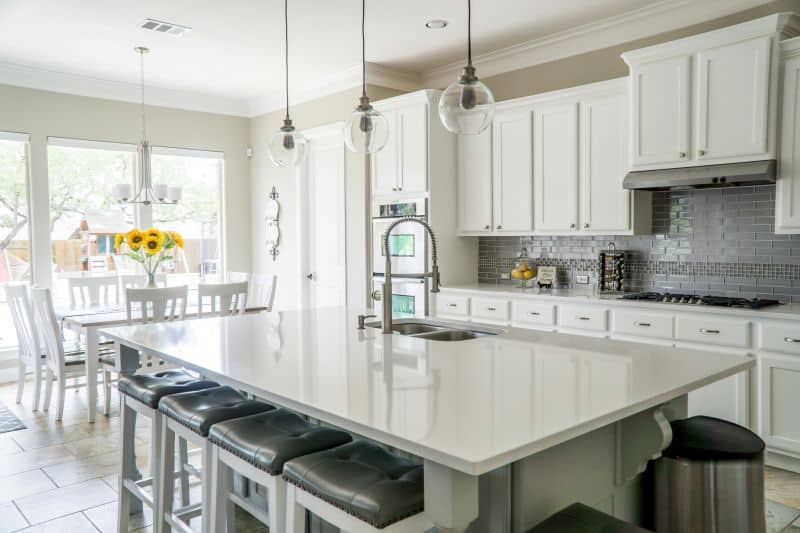
27 Jul How to Keep Humidity Levels in Check with Your HVAC System
Maintaining proper indoor humidity isn’t just about comfort—it directly affects your health, your home’s structural integrity, and your HVAC system’s performance. If humidity is too high or too low, you may experience issues like mold growth, increased allergies, or dry air that causes discomfort.
The good news? Your HVAC system can be a powerful tool in keeping moisture levels balanced. In this post, we’ll explore why humidity control matters, how HVAC systems help regulate it, and 11 effective strategies to manage humidity in your home year-round.
Why Humidity Control Is Essential
Controlling humidity isn’t just a comfort issue—it’s a necessity. Excess moisture in your home can lead to mold growth, structural damage, and respiratory problems. On the other hand, low humidity can cause dry skin, irritated sinuses, and even cracks in wood flooring and furniture.
Balanced humidity creates a healthier environment, improves HVAC efficiency, and helps preserve your home’s condition.
Ideal Indoor Humidity Levels Explained
The Environmental Protection Agency (EPA) recommends maintaining indoor humidity levels between 30% and 50% to ensure comfort and prevent moisture-related issues.
During the winter months, a range of 30% to 40% is ideal to avoid condensation and dry air, while in the summer, keeping humidity between 40% and 50% helps prevent mold growth and that sticky, uncomfortable feeling. Staying within these ranges supports a healthier indoor environment and promotes better HVAC efficiency.

Signs Your Home Has High or Low Humidity
Humidity problems aren’t always visible, but there are clear warning signs to watch out for.
Too Much Humidity
-
Condensation on windows
-
Musty or damp smells
-
Mold growth in bathrooms or corners
-
Sticky or clammy indoor air
Too Little Humidity
-
Dry, itchy skin or eyes
-
Static electricity shocks
-
Cracking wood floors or furniture
-
Respiratory discomfort or nosebleeds
How HVAC Systems Regulate Humidity
Modern HVAC systems can help maintain optimal humidity, but only when operating correctly.
The Role of Air Conditioners
Air conditioners reduce humidity as they cool the air. However, an oversized unit may cool too quickly and fail to dehumidify effectively.
How Furnaces Affect Humidity
Furnaces heat the air but can dry it out during winter, especially if your system lacks a built-in humidifier.
Heat Pumps and Humidity Control
Heat pumps offer both heating and cooling, providing year-round temperature and humidity regulation when properly maintained.
Common HVAC Issues That Affect Humidity
Several HVAC-related problems can cause humidity imbalances in your home.
Oversized or Undersized HVAC Units
Oversized units cool the home too fast and don’t run long enough to remove moisture. Undersized units run constantly, wearing out faster and reducing efficiency.
Dirty Coils and Filters
Dust and debris on coils and filters restrict airflow, limiting the system’s ability to manage moisture levels.
Poor Ventilation
Rooms without proper airflow—like bathrooms or basements—can accumulate excess moisture and become breeding grounds for mold.

11 Effective Ways to Keep Humidity in Check
1. Use a Programmable Thermostat
Smart thermostats can optimize HVAC operation and help regulate humidity automatically throughout the day. They allow you to set temperature schedules that align with your daily routine, reducing unnecessary HVAC use. Many models also provide humidity readings and alerts, giving you greater control over your indoor environment.
2. Install a Whole-House Dehumidifier
These systems remove moisture across your entire home and integrate with your existing HVAC system. They’re especially helpful in regions with consistently high humidity or homes with basements prone to dampness. By maintaining balanced humidity levels, they also help preserve wood flooring, furniture, and electronics.
3. Seal Air Leaks
Cracks and gaps in windows, doors, and ductwork let in humid outdoor air. Sealing them reduces excess moisture and improves energy efficiency.
Use weather stripping, caulk, or foam sealant to close common problem areas. This not only reduces humidity but also lowers utility bills by keeping cooled air inside.
4. Upgrade Insulation
Good insulation prevents outside air from influencing indoor humidity, especially in older homes. Insulating walls, attics, and crawl spaces can make a significant difference in climate control. It also prevents condensation from forming inside walls, which can lead to mold or mildew.
5. Regular HVAC Maintenance
Professional tune-ups ensure your HVAC system is operating efficiently and effectively removing moisture. Technicians can check for clogged drains, clean coils, and ensure proper refrigerant levels—all factors that affect humidity. Scheduled maintenance also extends the lifespan of your unit and prevents costly repairs.
6. Clean Ductwork
Dust and mold in duct systems can hinder airflow and impact your home’s overall humidity levels. Regular cleaning prevents buildup that can trap moisture and encourage microbial growth. It also improves air quality and helps your HVAC system work more efficiently.
7. Use Exhaust Fans Properly
Always run bathroom and kitchen exhaust fans during and after use to vent moisture outside. Make sure fans are vented to the outdoors, not just into an attic or crawlspace. Leaving them on for 15–20 minutes after cooking or showering helps fully eliminate excess moisture.
8. Control Indoor Plants
Some houseplants release moisture into the air. Keep them in well-ventilated areas and use drip trays. Avoid clustering too many plants in one room, especially in smaller or poorly ventilated spaces. Choose plants that require less watering or are known for minimal transpiration if humidity is a concern.
9. Fix Plumbing Leaks
Even small leaks under sinks or behind walls can increase indoor humidity and lead to mold. Inspect pipes regularly and address any signs of moisture or discoloration immediately. Prompt repairs not only control humidity but also prevent structural damage over time.
10. Avoid Overcooling Your Home
Setting your thermostat too low can lead to condensation and excess moisture buildup. Aim for a moderate temperature that balances comfort and moisture control. Excessive cooling can also strain your HVAC system and increase energy usage unnecessarily.
11. Invest in a Hygrometer
A hygrometer measures indoor humidity so you can monitor and adjust it before problems start. Ideal indoor humidity levels typically fall between 30% and 50%. Digital models often pair with smart home systems for real-time monitoring and automatic adjustments.
How to Measure and Monitor Humidity Accurately
The easiest way to track humidity is with a digital hygrometer. Place them in areas prone to moisture like basements, kitchens, and bedrooms. Smart thermostats with built-in sensors are also helpful for consistent monitoring.
Seasonal Humidity Control Tips
Winter
-
Use a humidifier to combat dry air
-
Keep the furnace from overheating your space
-
Add moisture to the air with bowls of water or indoor plants (in moderation)
Summer
-
Run your AC in auto mode, not just on “fan”
-
Use a dehumidifier in high-humidity areas like basements
-
Keep curtains closed to reduce solar heat and humidity gain
DIY vs Professional Humidity Solutions
DIY Options
-
Seal window and door drafts
-
Use portable humidifiers or dehumidifiers
-
Clean or replace HVAC filters regularly
Professional Options
-
Whole-home humidity systems
-
Proper HVAC sizing and duct balancing
-
Full system inspections and maintenance plans
If DIY efforts aren’t solving the problem, professional intervention ensures long-term humidity control and system performance.
Long-Term Benefits of Humidity Management
Consistent indoor humidity control provides several benefits:
-
Healthier indoor air quality with fewer allergens
-
Greater energy efficiency and lower utility bills
-
Protection against mold, mildew, and structural damage
-
Improved comfort and better sleep quality
It’s a worthwhile investment in your home’s longevity and your family’s well-being.
Final Thoughts
Managing humidity is an essential aspect of home comfort and HVAC system performance. By monitoring moisture levels, maintaining your HVAC system, and making smart upgrades, you can keep your indoor environment comfortable, efficient, and healthy year-round.
Whether you opt for DIY fixes or call in a professional, humidity control should always be part of your home maintenance plan.
FAQs
What should the humidity be in a house with HVAC?
Indoor humidity should stay between 30% and 50%, depending on the season and climate.
Can HVAC systems cause dry air?
Yes. In winter, heating systems often dry out indoor air unless paired with a humidifier.
Is it OK to run a dehumidifier and AC together?
Absolutely. In humid climates, running both helps maintain comfort and moisture control.
Can poor HVAC design lead to high humidity?
Yes. Systems that are too large or poorly ventilated may not remove enough moisture from the air.
What’s the difference between a dehumidifier and an air conditioner?
Air conditioners cool the air and remove some moisture. Dehumidifiers are dedicated to moisture removal and work in tandem with ACs.
How often should HVAC filters be changed to manage humidity?
Filters should be checked monthly and changed every 1–3 months, depending on use and system needs.


Sorry, the comment form is closed at this time.